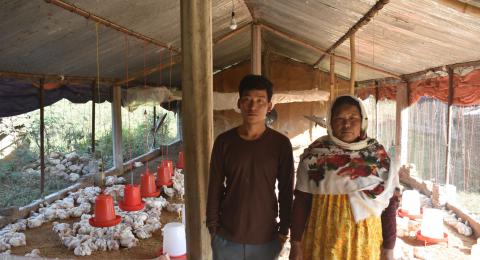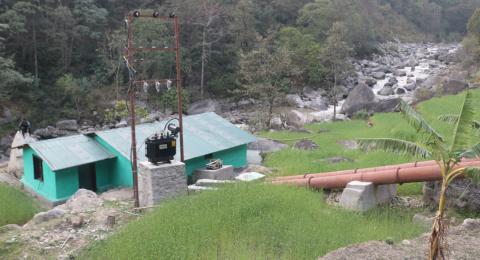Waiting for spontaneous positive effects of electrification projects to trickle-down in rural areas is not a satisfactory option. In case of community electrification intervention with Improved Water Mills Electrification (IWME) technology, we need to break down this notion and therefore, it is necessary to integrate community electrification intervention with productive use of electricity at rural micro-enterprise level. The most efficient way to deliver effective and lasting impacts when designing a rural electrification scheme is to ensure that such programs provide a direct impact on livelihoods and revenue generation, in addition to the more conventional impacts on standards of living. Increasing revenue generation can be accomplished by transforming the IWME community electrification intervention into a profit-making business enterprise as well as by improving productivity of an existing production process and by creating new lines of activities that will generate employment and local demand.
Indeed, the IWME community electrification has made an attempt to prove this integration by introducing productive end-use of energy at rural enterprise level and transforming the domestic electrification aspect by introducing a commercially sensitive tariff structure, which has further examined whether it could transform the generally conceived community electrification component into a profit making enterprise.
EnDev programme in Nepal aims to enable rural communities to get access to modern energy services in remote rural areas. The Government of Nepal has been striving to implement various programmes to increase electricity penetration in the remote rural areas of the country. In the case of off-grid technologies, the renewable energy subsidy policy supports IWME system development in remote rural areas providing up to 30 – 40% subsidies per project site. However, there is a lack of detail in implementation modalities, guidelines relating to the subsidy policy and little knowledge regarding renewable energy-related policies at the local level.
Under this project SNV Nepal implemented IWME long shaft technology to generate electricity for rural electrification, with the potential for communities to take on a larger loan for installing a cross-flow turbine. These rural households rely on substitutes such as kerosene oil for their lighting purpose with grid electricity reach still several years away. Electricity generated from IWME will be used household lighting and for small, rural micro-enterprises.
Pico-Hydro Systems
In high hills of Karnali and Sudur Paschim province, pico-hydro schemes will be introduced to provide electricity along with mostly existing mechanized agro-processing facilities for remote communities, where neither connection to the national grid not to MHP is feasible.
SNV Nepal in liaison with AEPC, LGUs and pico-hydro user committees will be the major local stakeholders. SNV Nepal will provide the advisory, technical and management support and EnDev Nepal will do monitoring and evaluation during and post installation and provide 25% of total cost as grant. AEPC will provide policy support and subsidies. Pico hydro technologies are locally manufactured, and low cost technology which are capable of providing electrical and mechanical power will be installed.
Role and Responsibilities under IWME/Pico Hydro
IWME: In terms of operational structure, SNV managed the project’s technical assistance, overall project management and quality control in line with EnDev and National Rural and Renewable Energy Programme (NRREP) requirements. During the project’s implementation time period, it was planned that approximately 45% of the investment in IWME project will be a grant from EnDev, 23% will be credit from local financial institutions and with remaining 32% being the equity investment from the communities in the form of cash and labor.
Pico-Hydro Systems: SNV Nepal is implementing this project with support from EnDev to liaise with AEPC and (rural) municipalities. AEPC provides subsidies to appropriate schemes, while the rural municipalities (based on decentralized energy policies) also provide financial support. Together, both entities will cover 55% of the investment, while the remote communities will contribute 20% and 25% grant from EnDev is planned to close the financing gap. The collaboration with the (rural) municipalities will go beyond financing, as they also have an important role in planning, coordination, reporting, and monitoring.

Targets
- Provide electricity access to 8,100 persons in remote communities (Karnali & Sudur- Paschim Province)
- Provide mechanized agro processing to 5,400 persons.
- Establish 10 agro-processing entrepreneurs, 30 MSMEs and 120 part time employment opportunities.
Achievements
The IWME has played an important role to improve electricity access to communities residing in challenging geomorphological conditions usually left behind in pocket areas mainly due to high project costs for grid extension and micro hydro projects. EnDev in coordination with SNV Nepal has supported 40 IWMEs in Nepal.
*reported numbers as of December 2020



